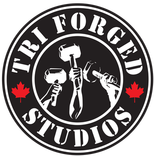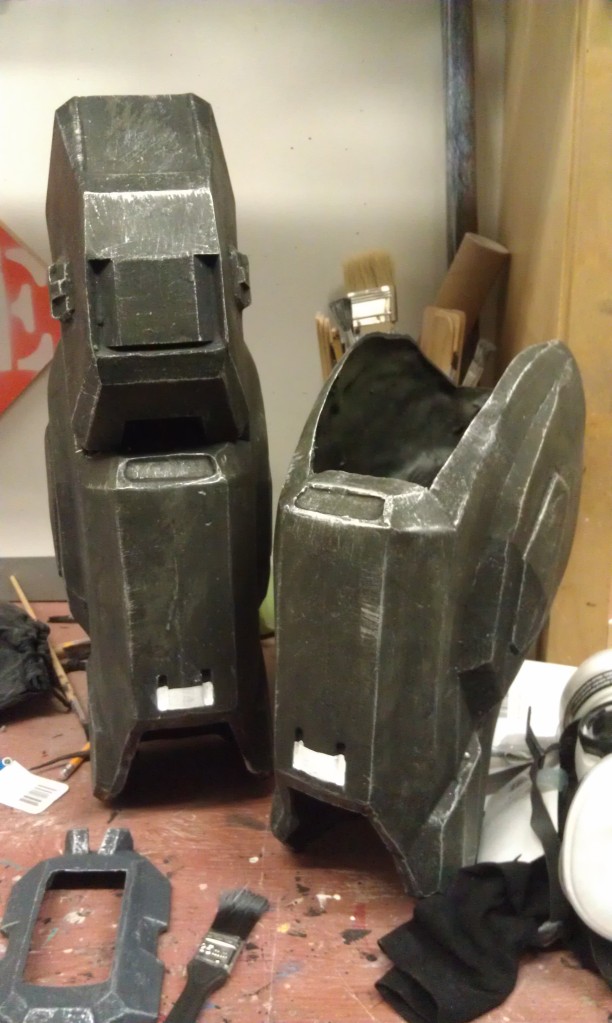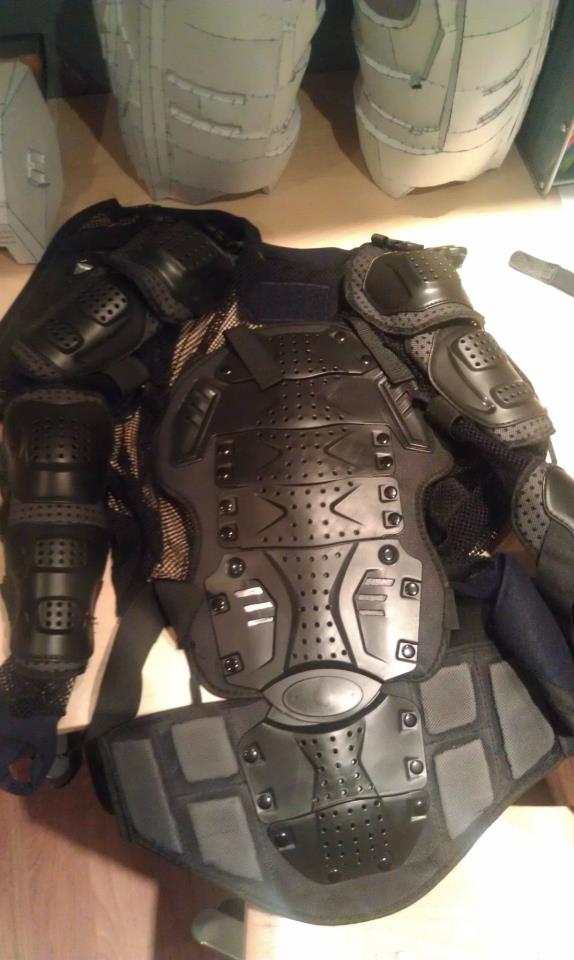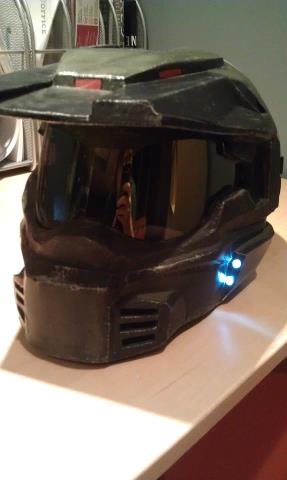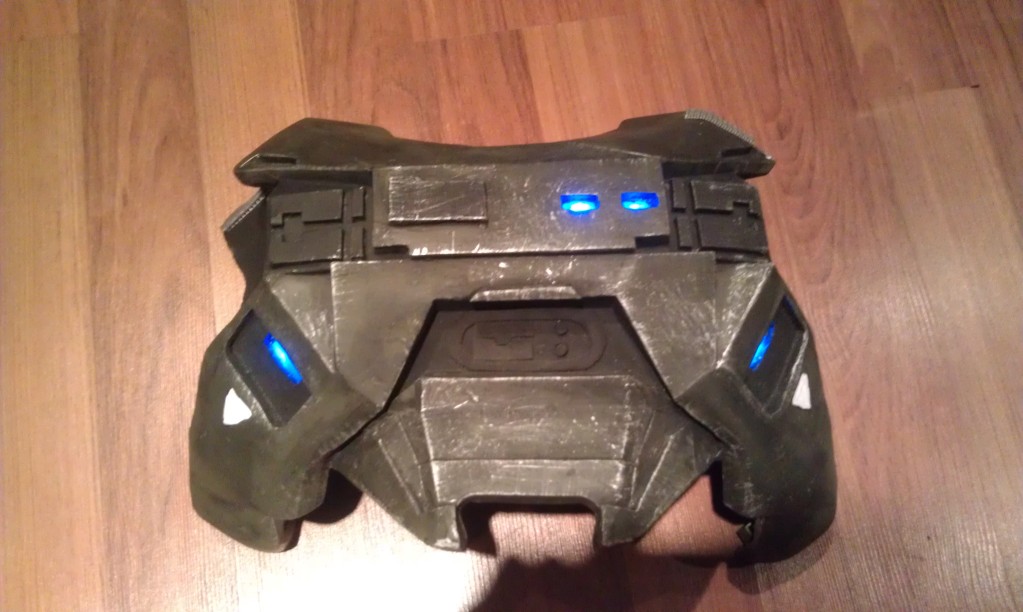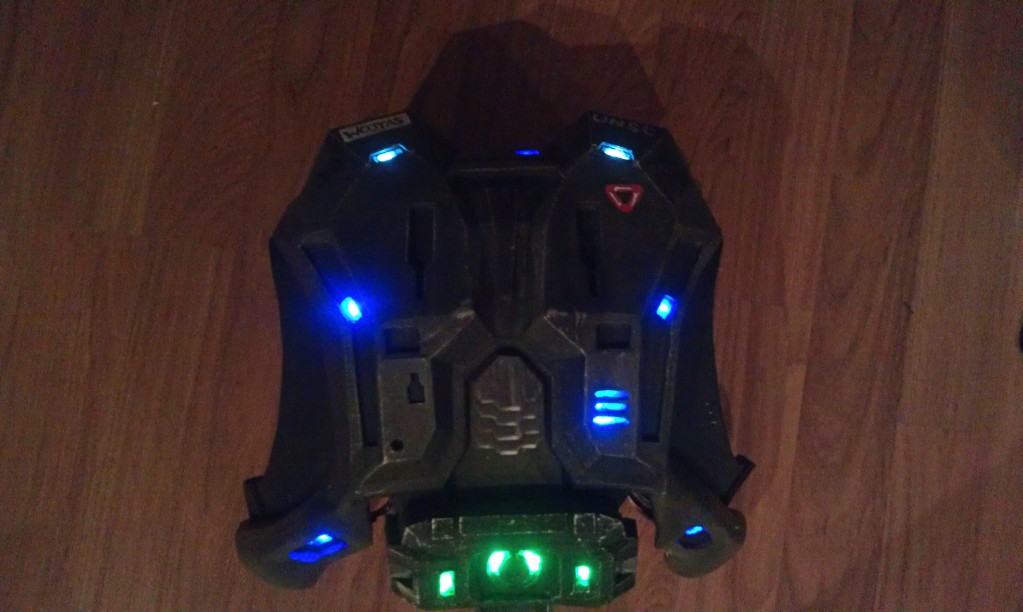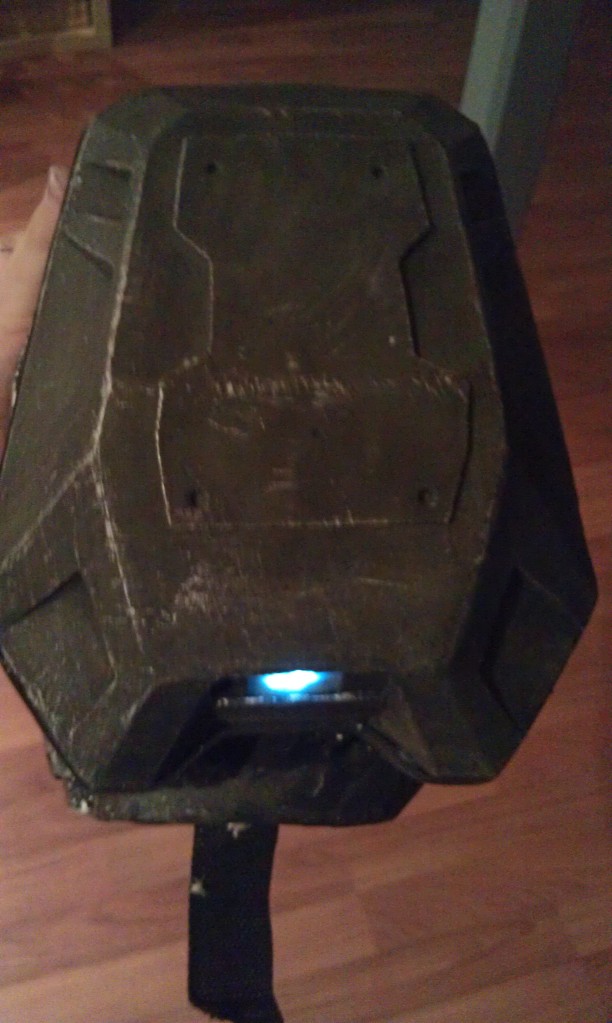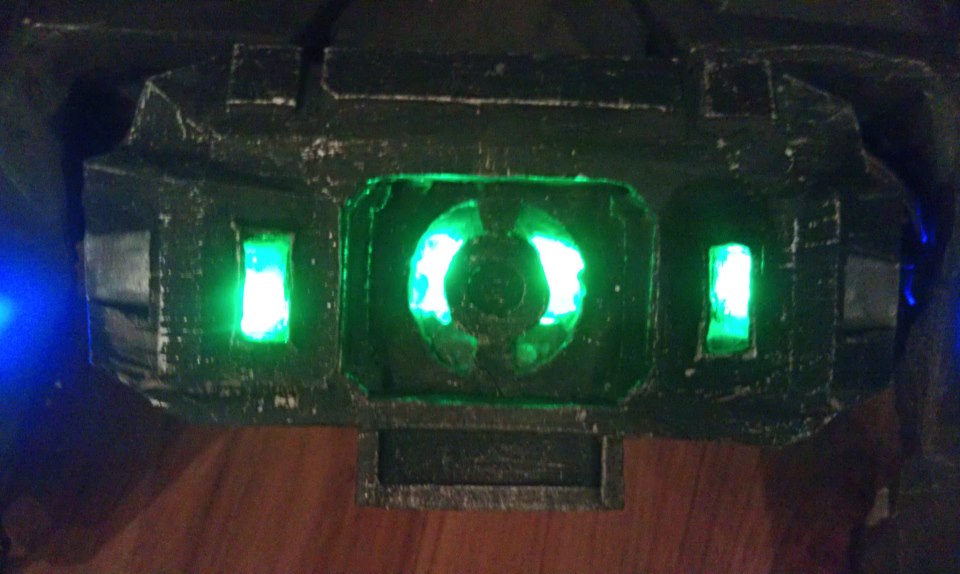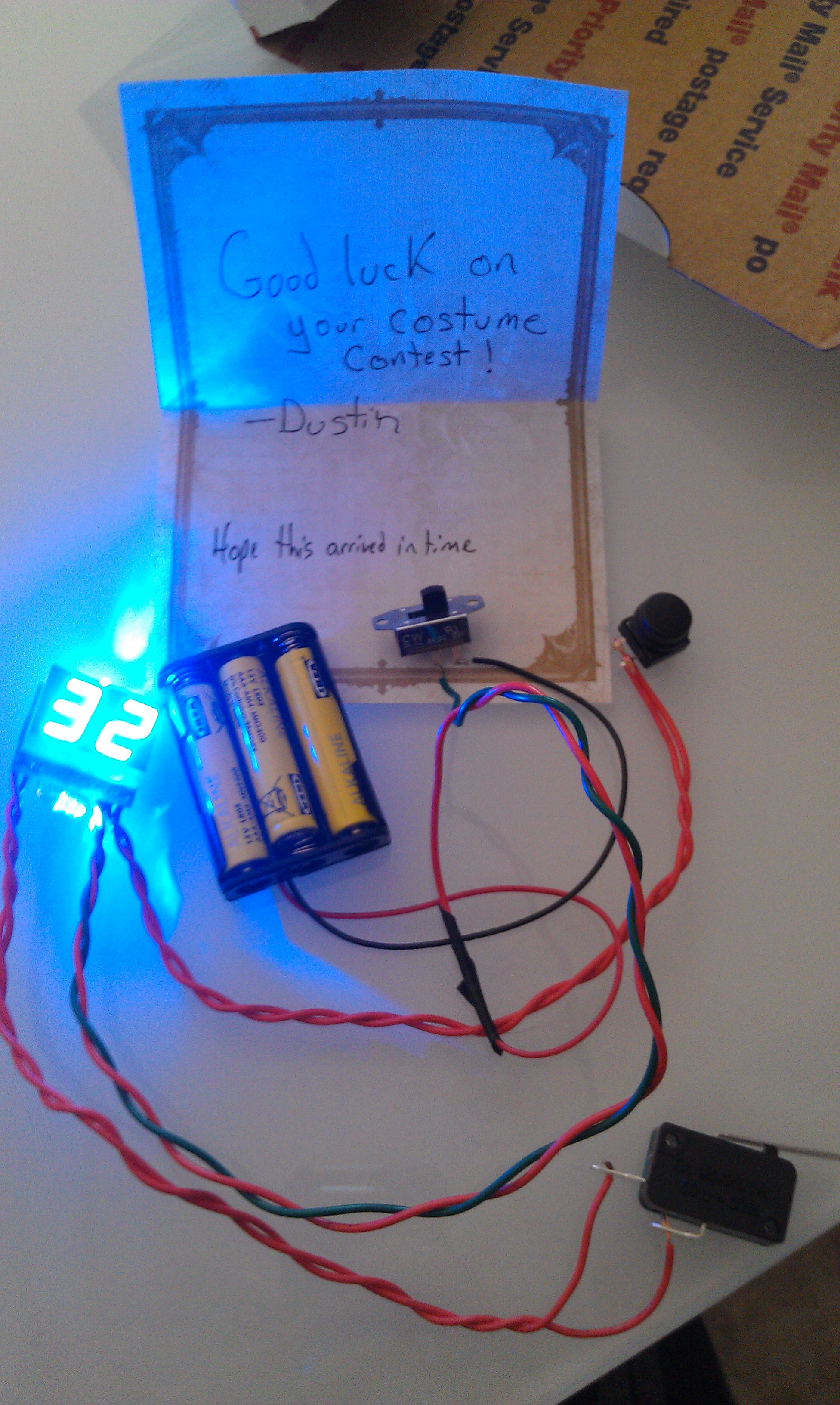Halo Reach Master Chief Costume
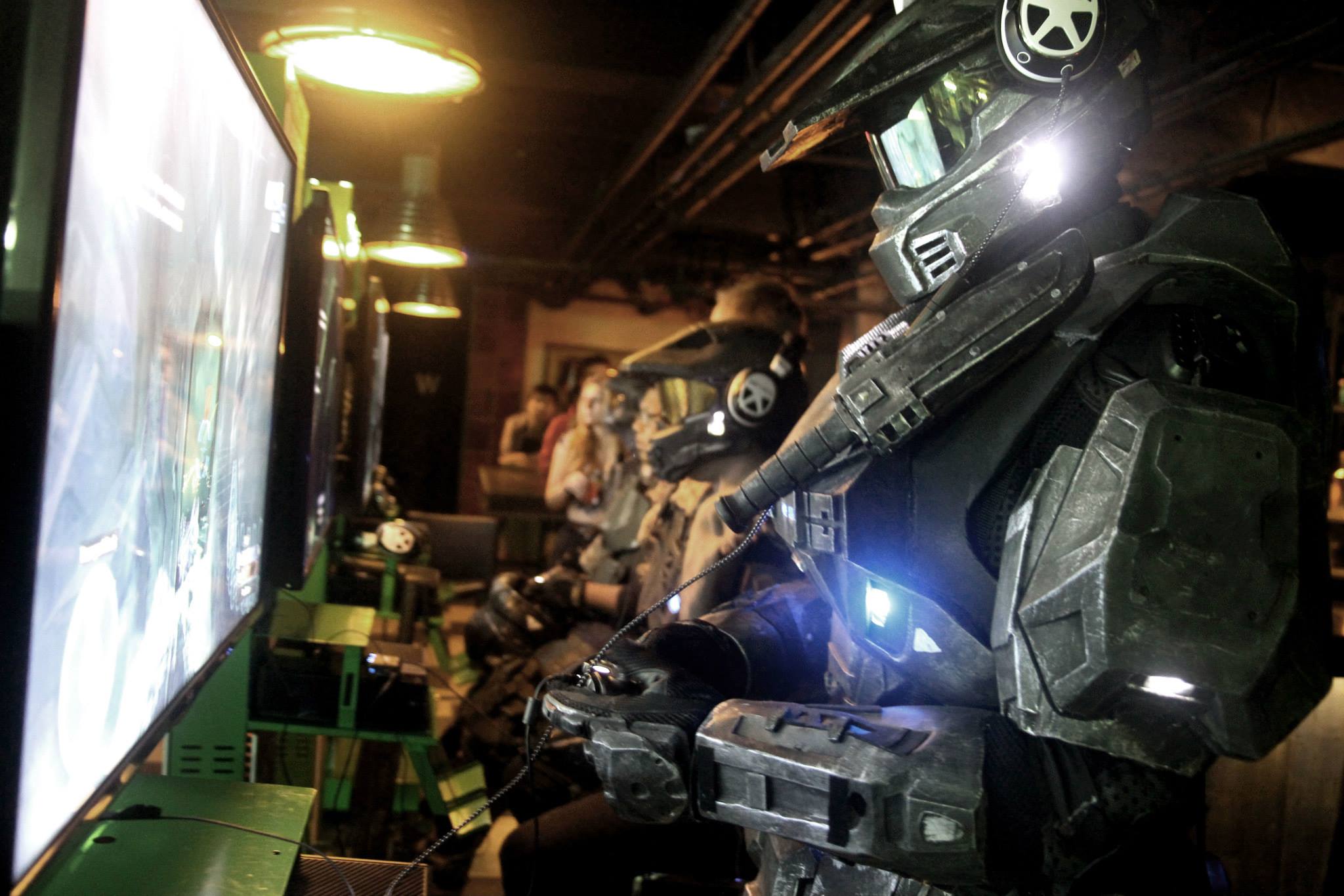
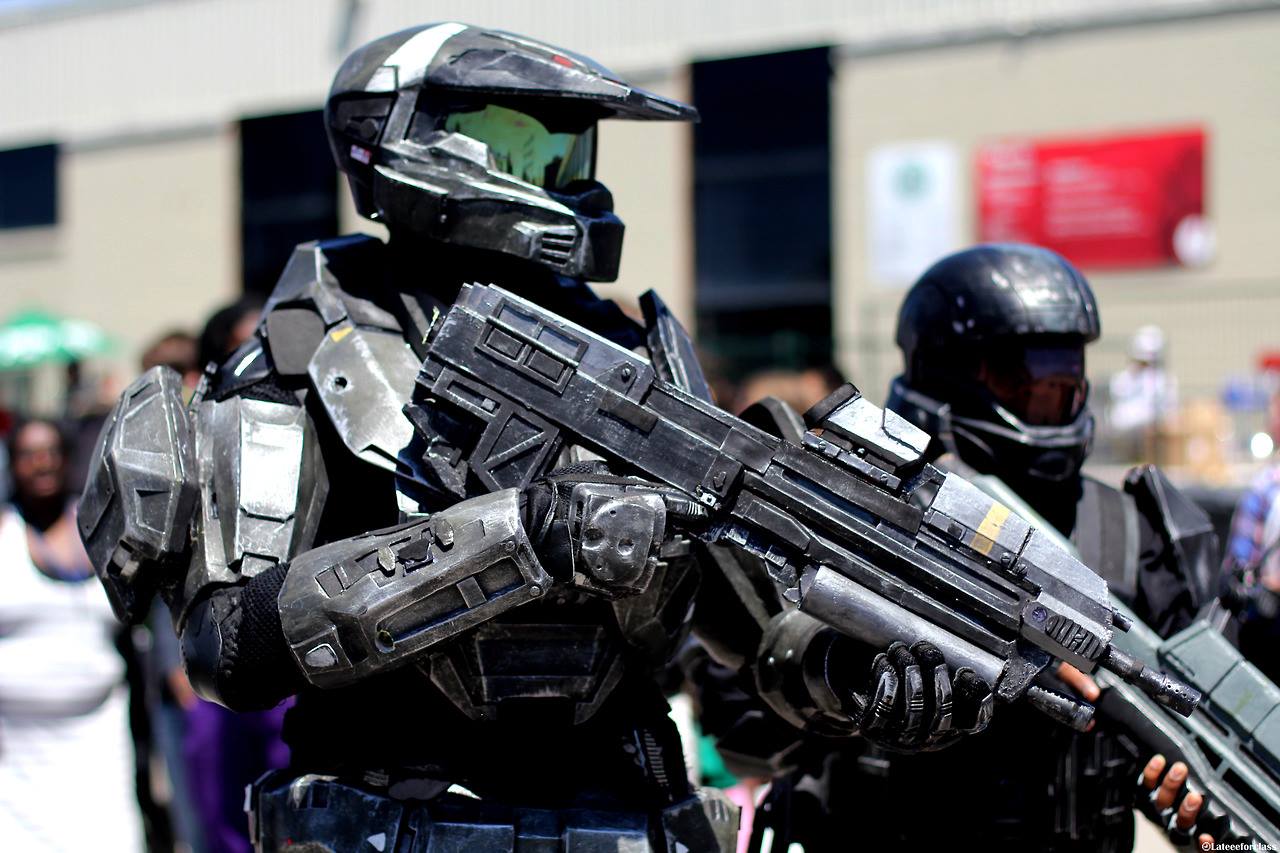


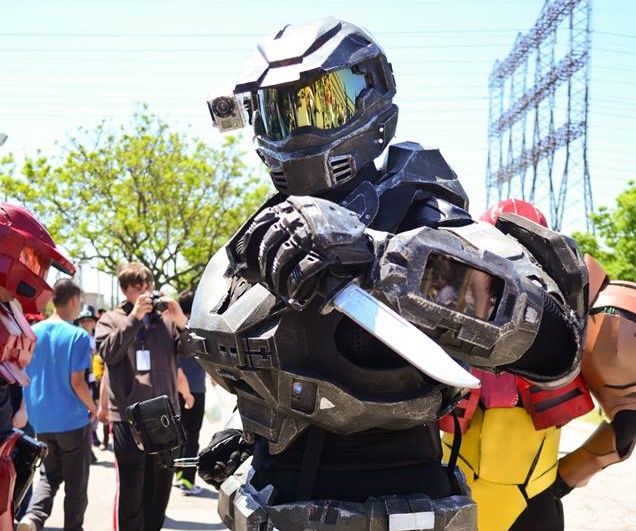
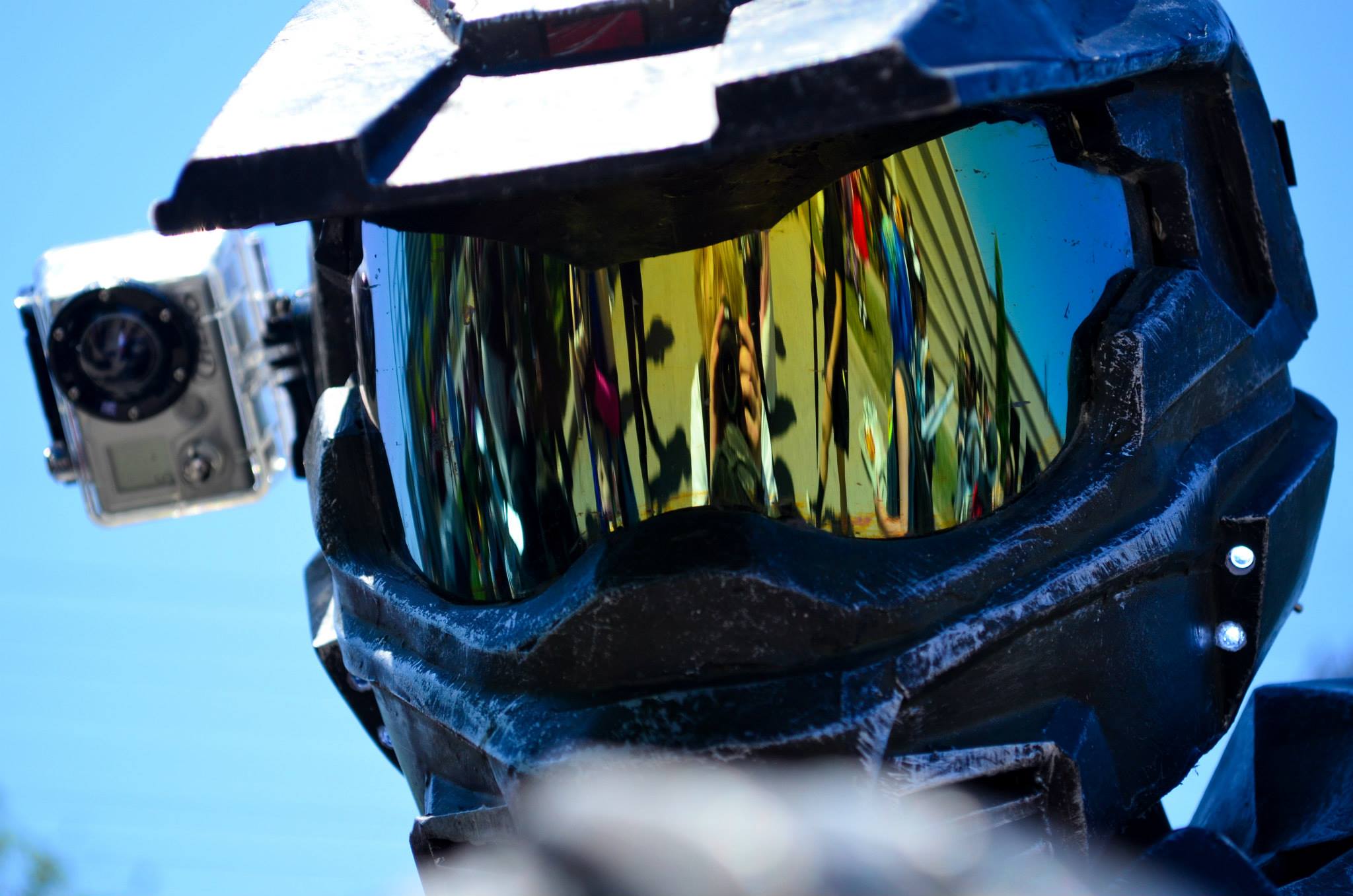
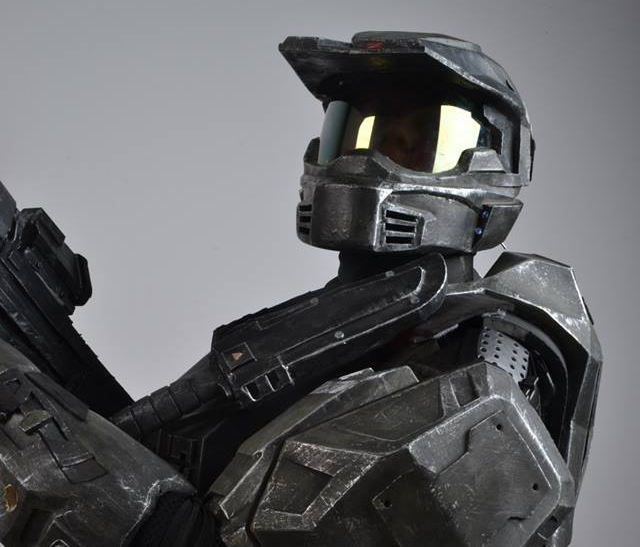
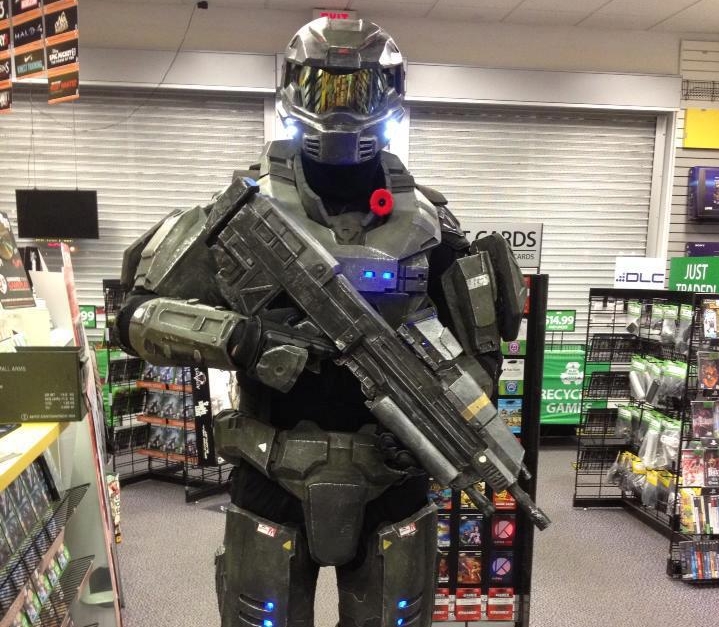
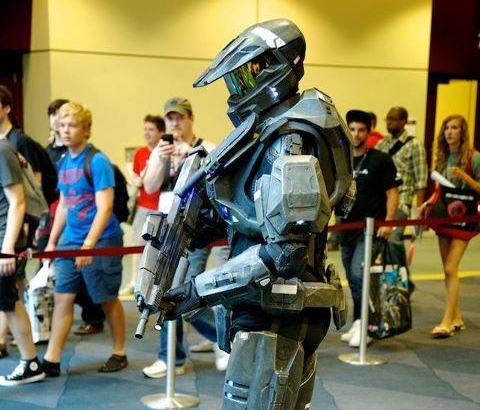
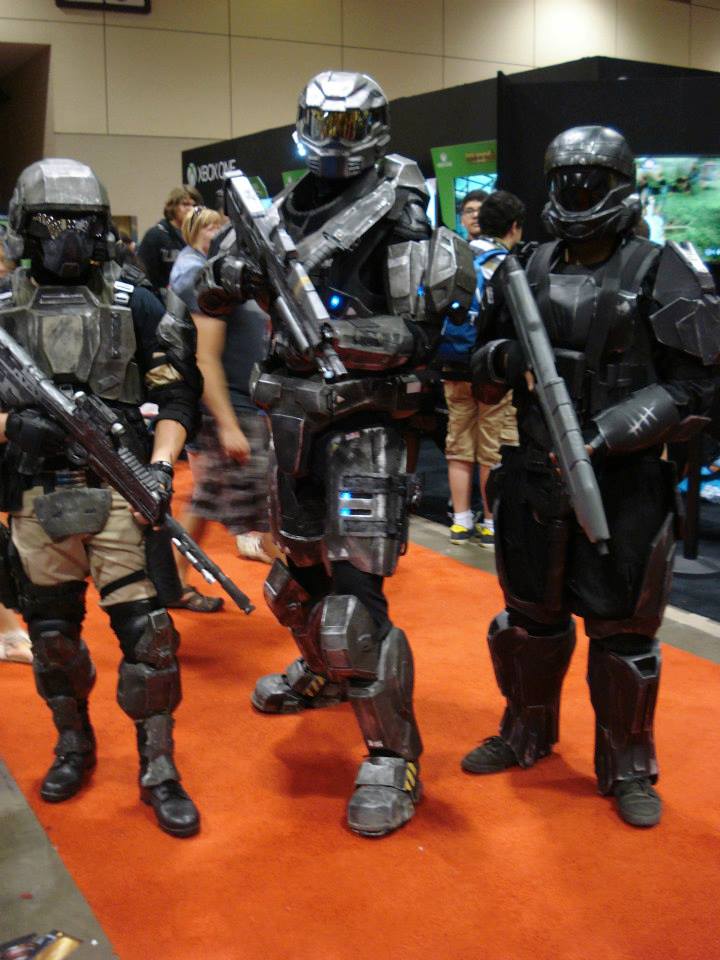
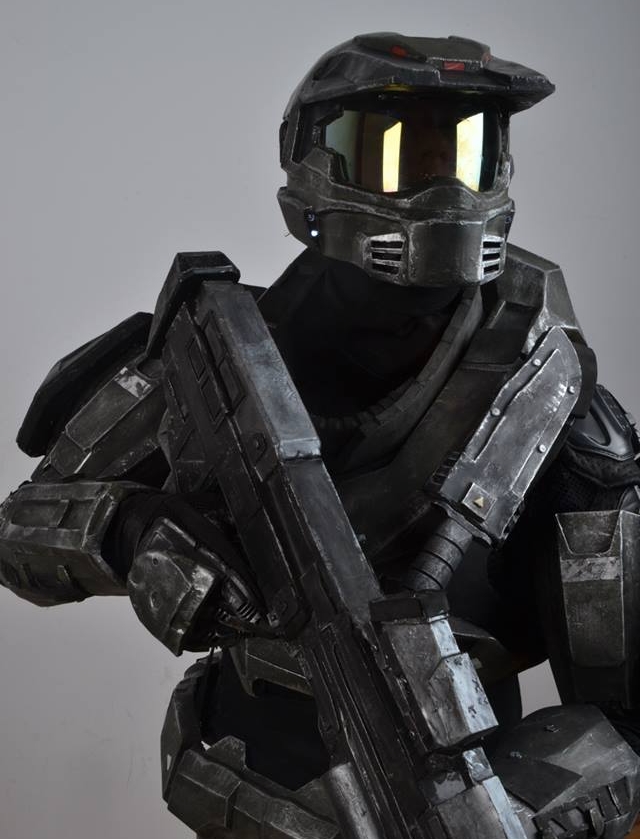
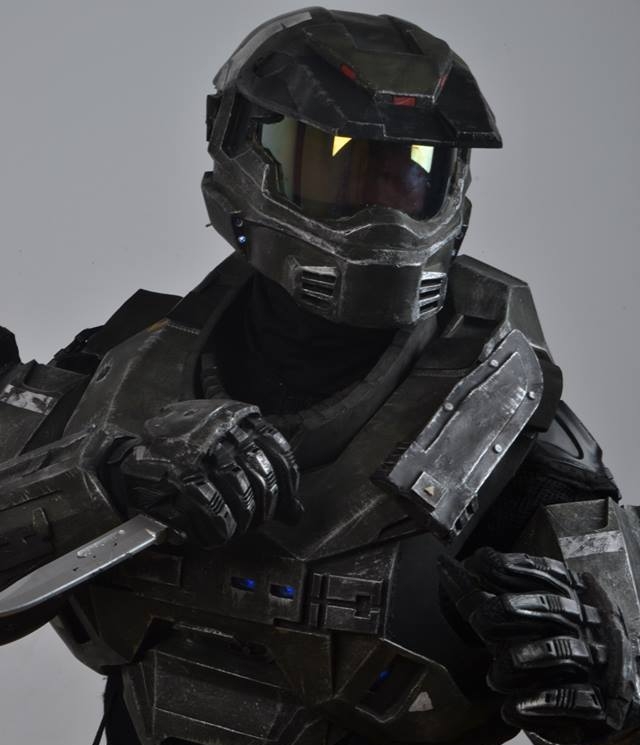
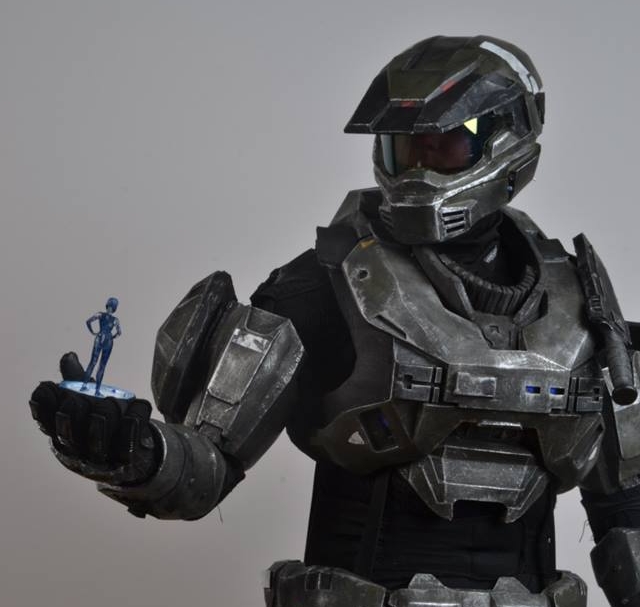

There is an incredible amount of information to summarize for a costume that took me almost a full year to make in one blog post. I want to just highlight the process by showing all of the different steps done to create this costume.
My full rundown is posted in my thread on the 405th.com, which is a database and community that kicked started my fascination with costume making.
Pepakura Stage
This is the first completed step in finishing my costume. I downloaded and used a program called "Pepakura Viewer" and "Pepakura Designer". I downloaded files I found on the 405th.com data base, opened them in Pepakura Designer and printed it on 110lb card stock. After printing, I cut each piece, score each fold with a blue pen for a "mountain fold" which indicates that the line will be folded up and used a red pen for scoring "valley folds" for downward folds. I used high temperature hot glue to piece everything together. Repeat for every piece.
View fullsize
![Helmet]()

Helmet
View fullsize
![Torso]()

Torso
View fullsize
![Combat Knife]()

Combat Knife
View fullsize
![Armour Ability]()

Armour Ability
View fullsize
![Torso Back Detail]()

Torso Back Detail
View fullsize
![Spine]()
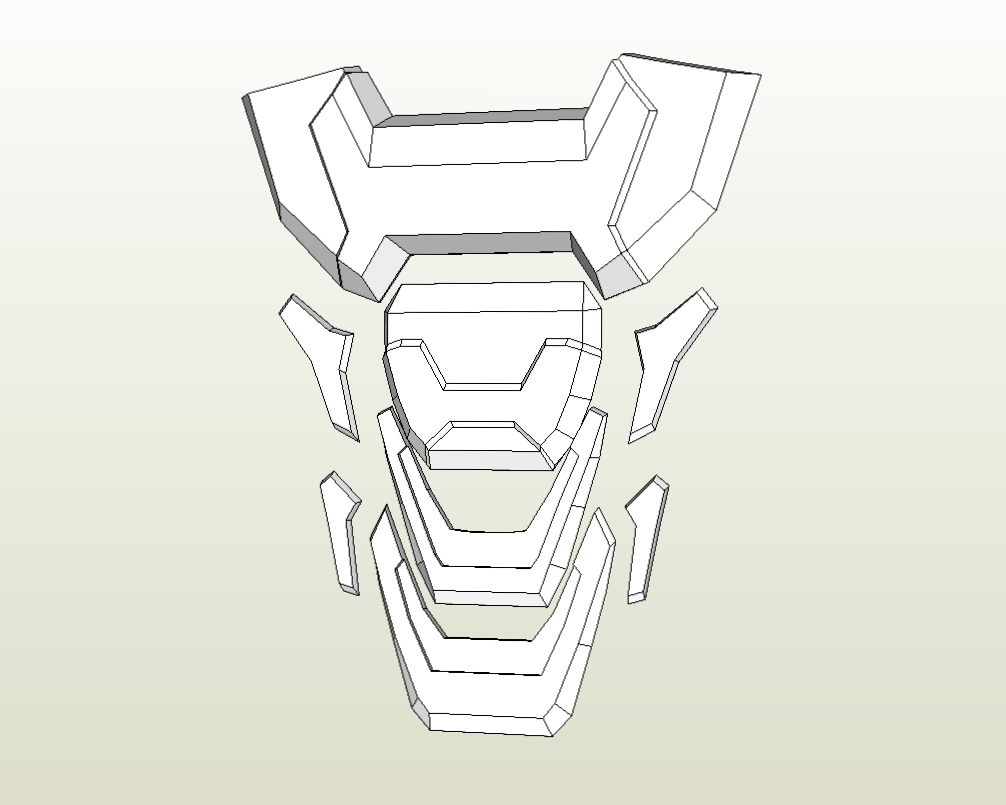
Spine
View fullsize
![Shoulder]()

Shoulder
View fullsize
![Bicep]()

Bicep
View fullsize
![Forearm]()

Forearm
View fullsize
![Hand Plate]()

Hand Plate
View fullsize
![Tac Pad]()

Tac Pad
View fullsize
![Cod Piece]()

Cod Piece
View fullsize
![Thigh]()

Thigh
View fullsize
![Knee]()

Knee
View fullsize
![Shin]()

Shin
View fullsize
![Boot]()
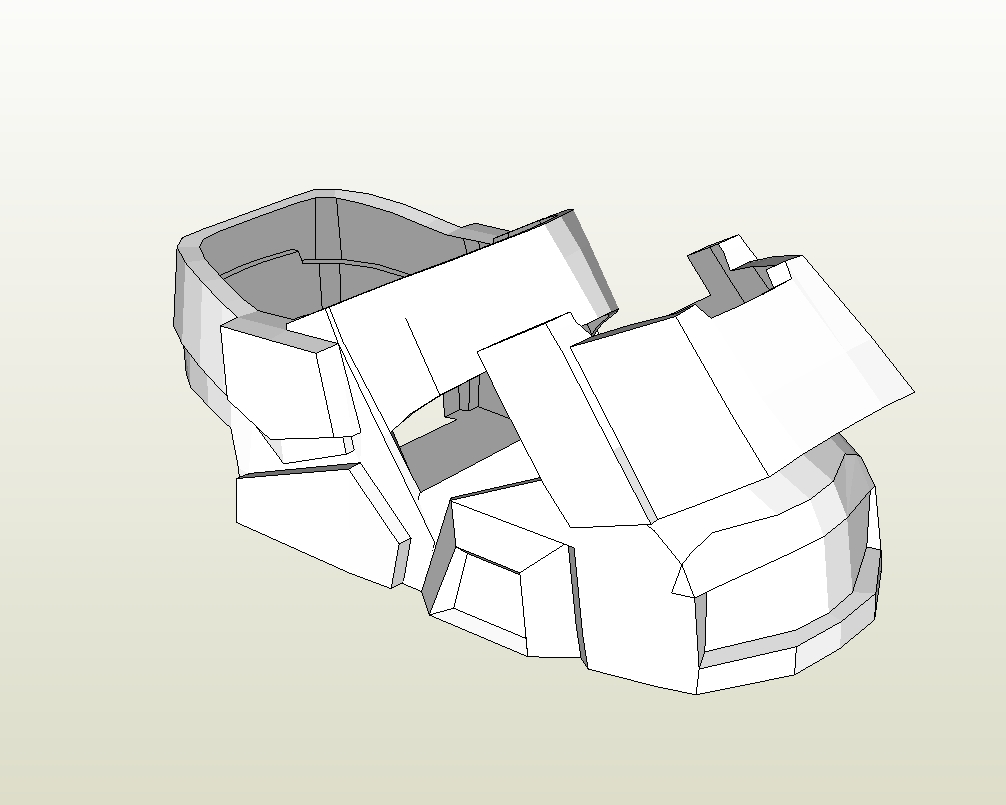
Boot
View fullsize
![M6G Magnum]()

M6G Magnum
View fullsize
![MA5B Assault Rifle]()

MA5B Assault Rifle
After gathering the required files, I started to print them out onto 110 lb Card stock. These parts are all cut, scored, folded and glued by hand. I wanted to get started as soon as possible, I still had some left over colorful card stock left over so I decided to have fun and do a rainbow chief.
View fullsize
![Front Progress]()

Front Progress
View fullsize
![Helmet Left]()

Helmet Left
View fullsize
![Helmet Right]()

Helmet Right
View fullsize
![Torso progress]()
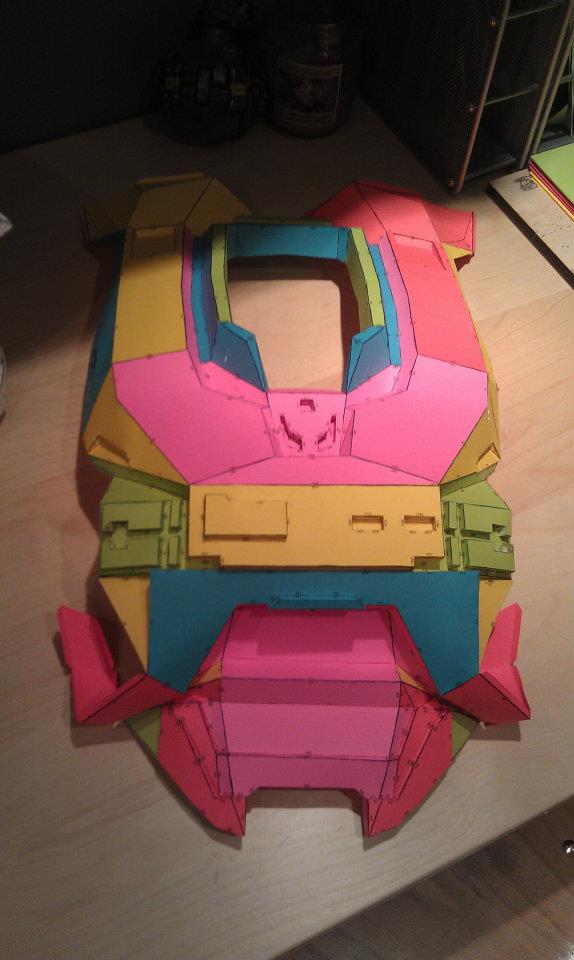
Torso progress
View fullsize
![Torso Front]()

Torso Front
View fullsize
![Torso Back]()

Torso Back
View fullsize
![Torso Side]()

Torso Side
View fullsize
![Bicep Front]()

Bicep Front
View fullsize
![Bicep Side]()

Bicep Side
View fullsize
![Completed]()

Completed
View fullsize
![Mark V Shoulder]()

Mark V Shoulder
View fullsize
![Forearm Top]()

Forearm Top
View fullsize
![Forearm Side]()

Forearm Side
View fullsize
![Hand Plates]()

Hand Plates
View fullsize
![Hand Plate Scale]()

Hand Plate Scale
View fullsize
![Top Completed]()

Top Completed
View fullsize
![Cod Front]()

Cod Front
View fullsize
![Bum Plate]()

Bum Plate
View fullsize
![Back Scaling]()

Back Scaling
View fullsize
![Tactical Pad]()

Tactical Pad
View fullsize
![Thigh Front]()

Thigh Front
View fullsize
![Thigh Side]()

Thigh Side
View fullsize
![Thigh Back]()

Thigh Back
View fullsize
![Thighs Completed]()

Thighs Completed
View fullsize
![Grenadier Knees]()

Grenadier Knees
View fullsize
![Knees Completed]()

Knees Completed
View fullsize
![Shin Front]()

Shin Front
View fullsize
![Shin Side]()

Shin Side
View fullsize
![Shin Back]()

Shin Back
View fullsize
![Shin's Completed]()
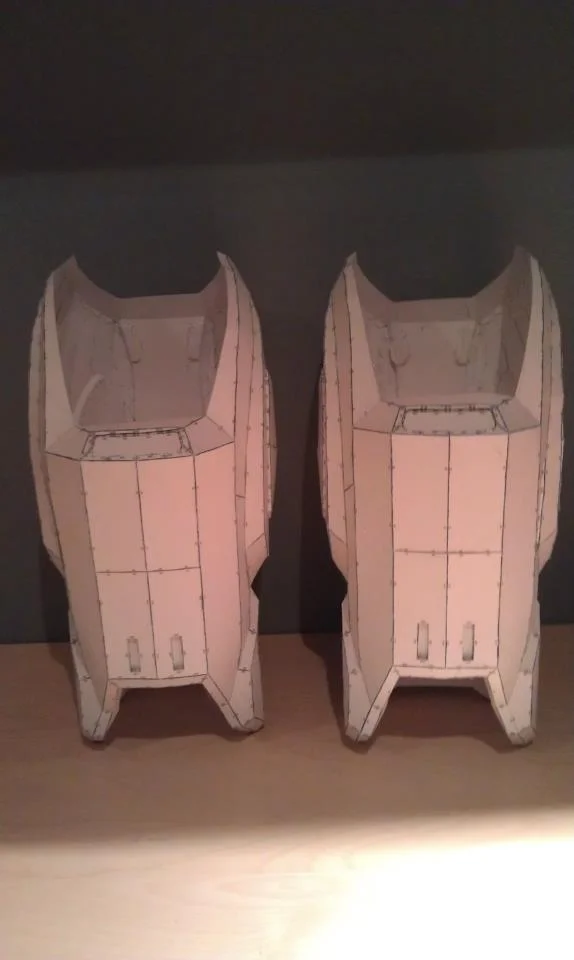
Shin's Completed
View fullsize
![Leg Test Fit]()

Leg Test Fit
View fullsize
![Leg Test Fit - Side]()

Leg Test Fit - Side
View fullsize
![Assault Rifle Progress]()

Assault Rifle Progress
View fullsize
![Assault Rifle Completed]()

Assault Rifle Completed
View fullsize
![Magnum Completed]()

Magnum Completed
View fullsize
![Full Test Fit - Front]()

Full Test Fit - Front
View fullsize
![Full Test Fit - Side]()
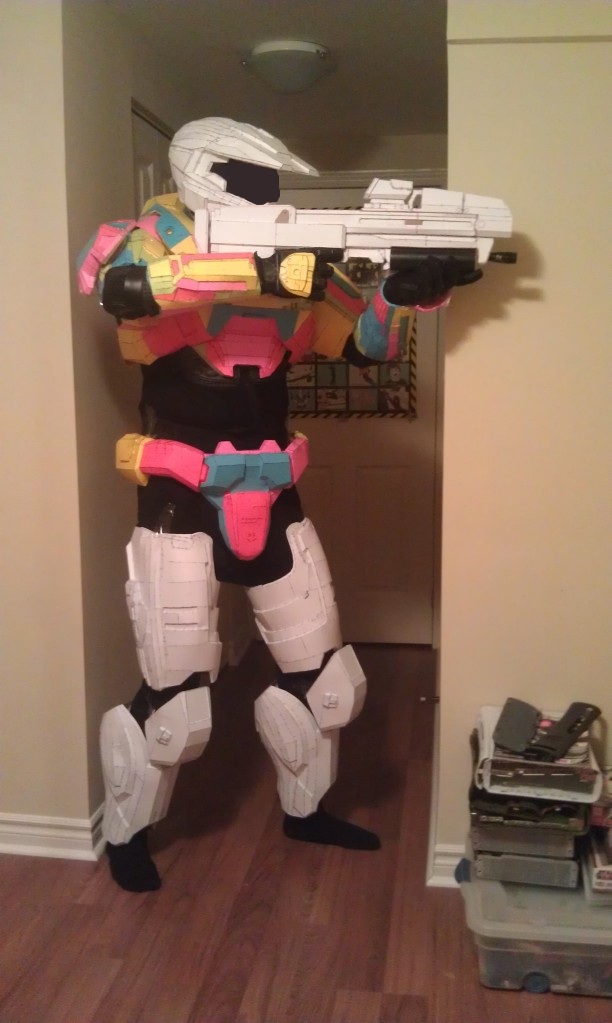
Full Test Fit - Side
View fullsize
![Full Test Fit - Back]()
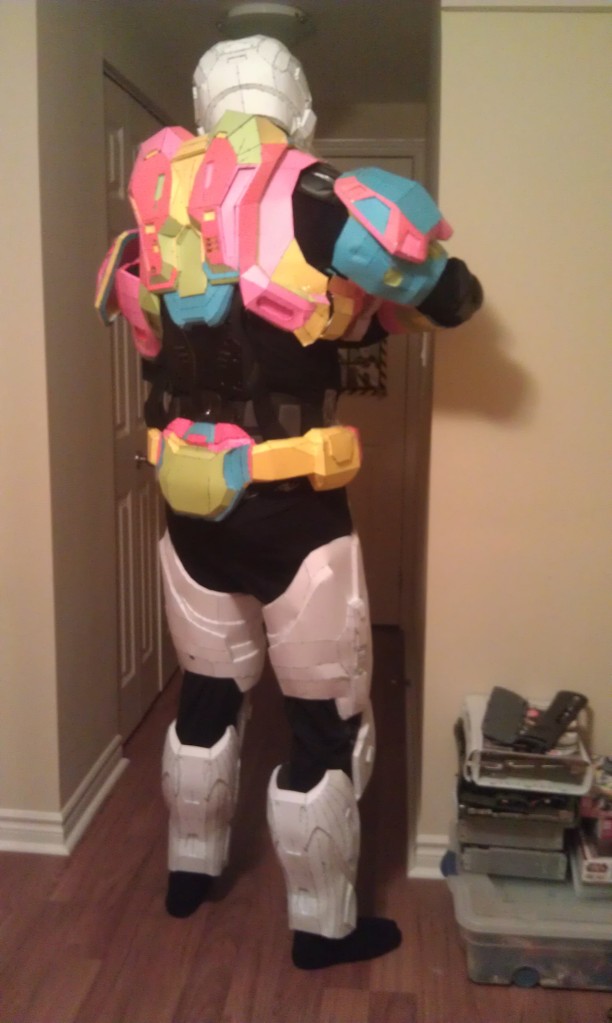
Full Test Fit - Back
View fullsize
![Boot Armor]()

Boot Armor
Fiberglass and Bondo
After doing a test fit of all the pieces, I was happy with the scaling and fit of the armor. The next step was so start reinforcing the card stock. I do this by using a fiberglass resin and using a paintbrush to coat the inside and outside with it. After both layers have dried, then I use the same fiberglass resin with fiberglass matte/cloth. Combining the two creates a very strong and light reinforcement to the inside of the costume piece. The fiber glassing is done only to the inside so keep the exterior details.
Once the fiber glassing process is done and dry, you can start applying thin coats of Bondo body filler to the outside of the piece. You do not have to coat every square inch with Bondo because this will create more work and potentially take away some details. I also applied a coat of a mixture called "Rondo". Rondo is a mixture that combines both the Bondo body filler "paste" and fiber glass resin and creates a runny Bondo consistency. I have heard that many compare it to chocolate pudding consistency. This allows the Rondo to be slushed around the inside and cover any sharp fiberglass parts.
View fullsize
![Helmet - Bondo]()

Helmet - Bondo
View fullsize
![Bondo'd Helmet - Top]()
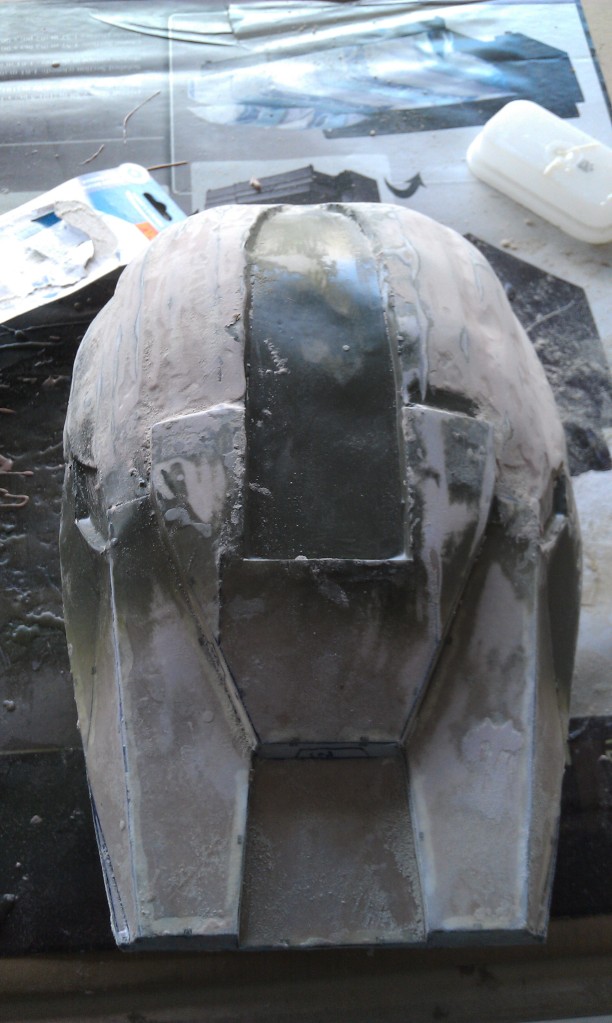
Bondo'd Helmet - Top
View fullsize
![Helmet Progress]()

Helmet Progress
View fullsize
![Helmet - Side]()

Helmet - Side
View fullsize
![Helmet - Back]()

Helmet - Back
View fullsize
![Torso - Resined]()

Torso - Resined
View fullsize
![Torso - Rondo/Bondo]()

Torso - Rondo/Bondo
View fullsize
![Torso - Split Open]()

Torso - Split Open
View fullsize
![Legs - Resined]()

Legs - Resined
View fullsize
![Thigh - Bondo]()

Thigh - Bondo
View fullsize
![Shin Comparison]()
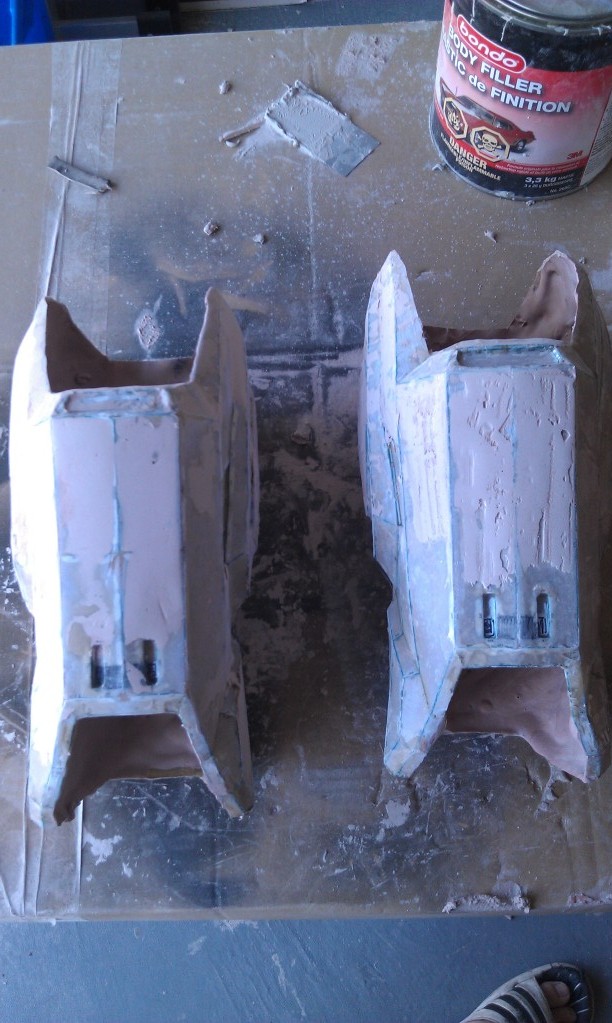
Shin Comparison
View fullsize
![Shin - Side]()

Shin - Side
View fullsize
![Leg Test Fit - Front]()

Leg Test Fit - Front
View fullsize
![Leg Test Fit - Front]()

Leg Test Fit - Front
View fullsize
![Boot Toe]()

Boot Toe
Paint & Finishing Touches
After sanding down the Bondo and spot putty. Sand able primer and a base coat of matte olive green is sprayed on the pieces. The olive green is too bright and "clean" for a suit of power armor, so I used a variety of techniques to achieve a battle worn look.
To achieve this, I used a "black wash" which is a combination of black acrylic paint and water. This is brushed onto all of the crevices of the armor and the surrounding area is wiped away immediately to allow only the paint in the crevice to dry. This technique is used to outline high and low pieces and to simulate where dirt would stay and get stuck.
This effect darkens the overall paint job so to highlight areas that stick out, I used a technique called "dry brushing". This is where you take a dry paint brush and spray a metallic silver/aluminum paint to the end and gently brush it on the edges and corners of the armor. The individual brush hairs will give a detailed scratch effect and give the effect that the top coat was uncovered to expose the metal underneath.
Details on the costume were painted using white, red or yellow acrylic paints while the warning logo's were printed on clear coated stickers.
To finish off the paint job, a semi-matte clear coat was sprayed to protect the paint job from minor scratches and the elements.
View fullsize
![Helmet - Clean]()
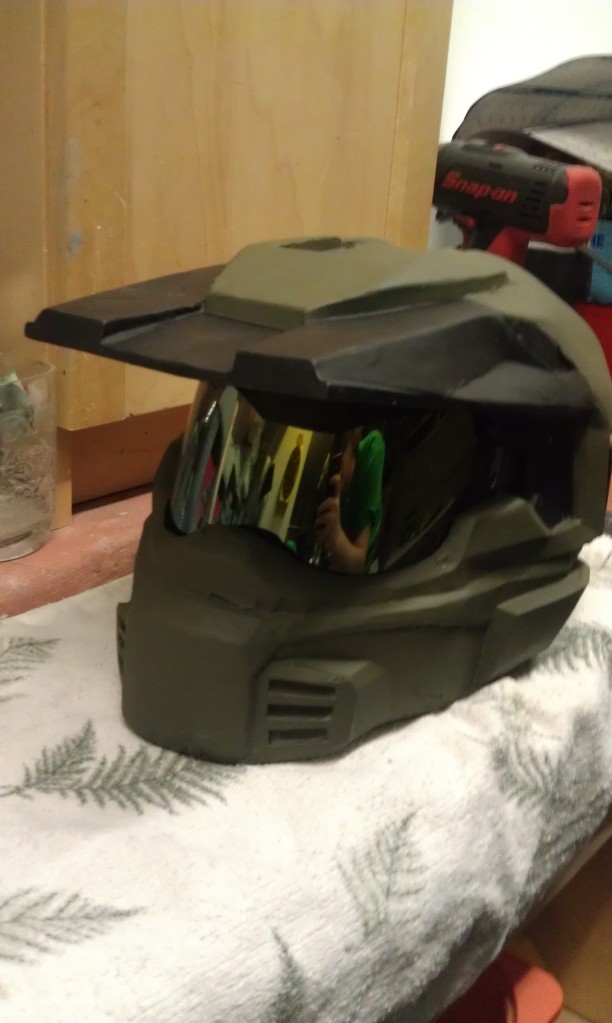
Helmet - Clean
View fullsize
![Helmet - Blackwash]()

Helmet - Blackwash
View fullsize
![Helmet - Finished]()

Helmet - Finished
View fullsize
![Helmet - Front]()

Helmet - Front
View fullsize
![Torso - Blackwash]()

Torso - Blackwash
View fullsize
![Torso Back - Blackwash]()

Torso Back - Blackwash
View fullsize
![Biceps - Blackwash]()

Biceps - Blackwash
View fullsize
![Biceps - Side]()

Biceps - Side
View fullsize
![Shoulders Scale]()

Shoulders Scale
View fullsize
![Mark V Shoulders - Finished]()

Mark V Shoulders - Finished
View fullsize
![Foam Neck Seal]()
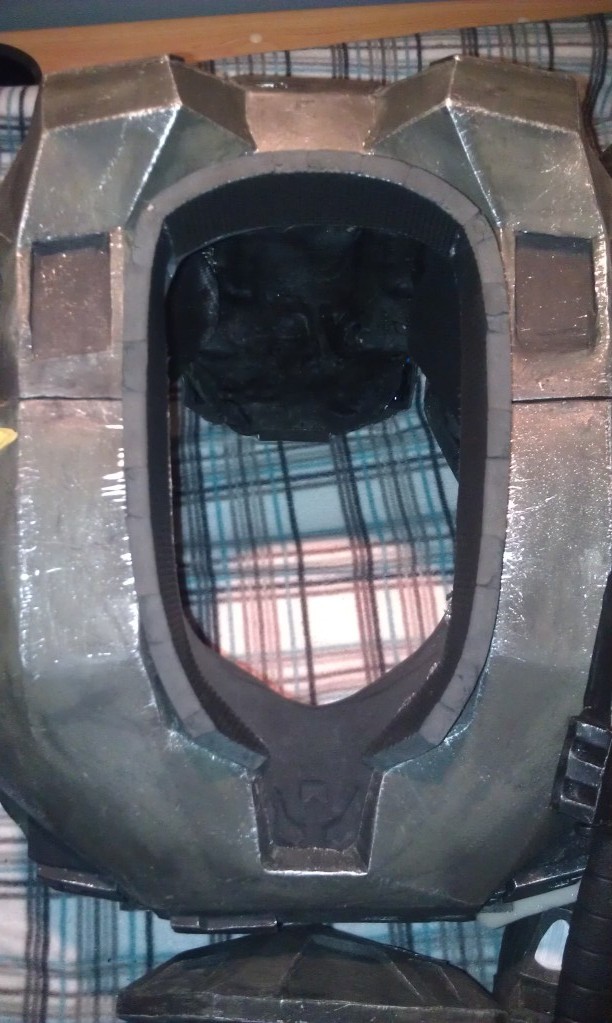
Foam Neck Seal
View fullsize
![No Foam Neck Seal]()

No Foam Neck Seal
View fullsize
![Forearm Paint]()

Forearm Paint
View fullsize
![Forearm Comparison]()

Forearm Comparison
View fullsize
![Tactical Pad Paintjob]()
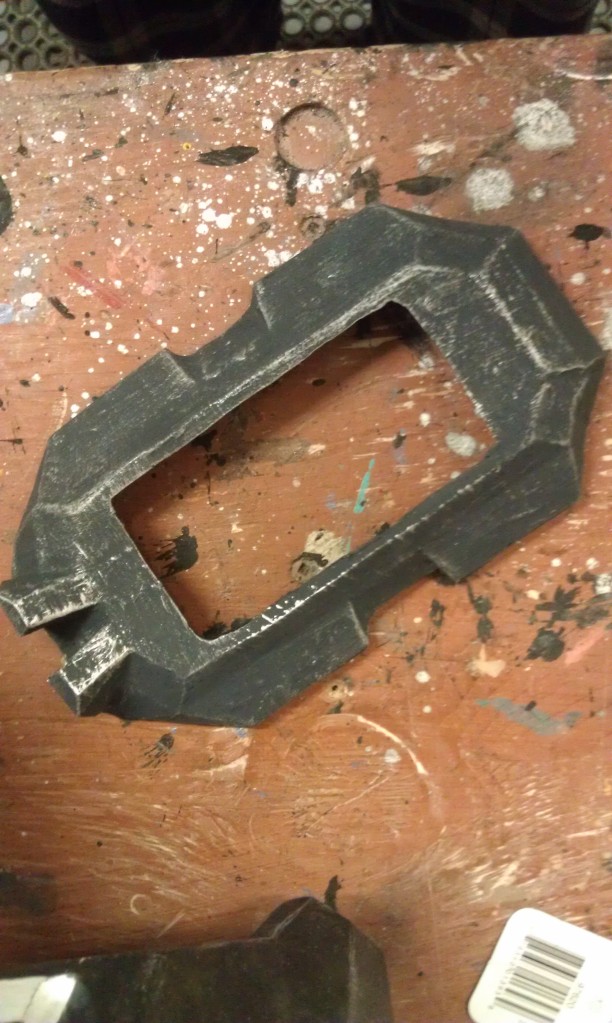
Tactical Pad Paintjob
View fullsize
![Gloves Done!]()

Gloves Done!
View fullsize
![Combat Knife Painted]()

Combat Knife Painted
View fullsize
![Completed Torso + Biceps]()

Completed Torso + Biceps
View fullsize
![Completed Torso + Biceps + Forearms + Hand Plates]()

Completed Torso + Biceps + Forearms + Hand Plates
View fullsize
![Test Fit]()

Test Fit
View fullsize
![Leg Test Fit]()

Leg Test Fit
View fullsize
![Thigh - Base Paint vs None]()

Thigh - Base Paint vs None
View fullsize
![Thighs - Blackwash vs None]()

Thighs - Blackwash vs None
View fullsize
![Thighs - Dry Brushing]()

Thighs - Dry Brushing
View fullsize
![Thigh - Side]()

Thigh - Side
View fullsize
![Thigh - Back]()

Thigh - Back
Lighting & Strapping
With the armour pieces finished, the next step is to add lights! I used a very basic circuit with includes a maximum of 2 LED's, an On/Off switch and a 9 Volt battery with connector. I stuck with a 2 LED maximum to allow the most amount of run time off of one battery. I decided on a 9 Volt battery because they were easy to find and can be bought for pretty cheap. I added one of these circuits to the thighs, shoulder+bicep and a few to the chest/torso and helmet.
Additional electronics in the costume include 2 x 9 Volt fans for the helmet, portable microphone amplifier, iPod touch to the forearm for music which is connected to the amplifier. The helmet also includes a GoPro attachment to record conventions and events at a first person view.
For strapping, I used a motorcycle jacket as a base to start from. I sewed parachute buckles with nylon straps to attach various parts as well as nylon loops.
Done!
I believe that covers my costume build. I included a slideshow video of my build on Youtube. If there is anything I left out or if you have any questions, please do not hesitate to ask!
